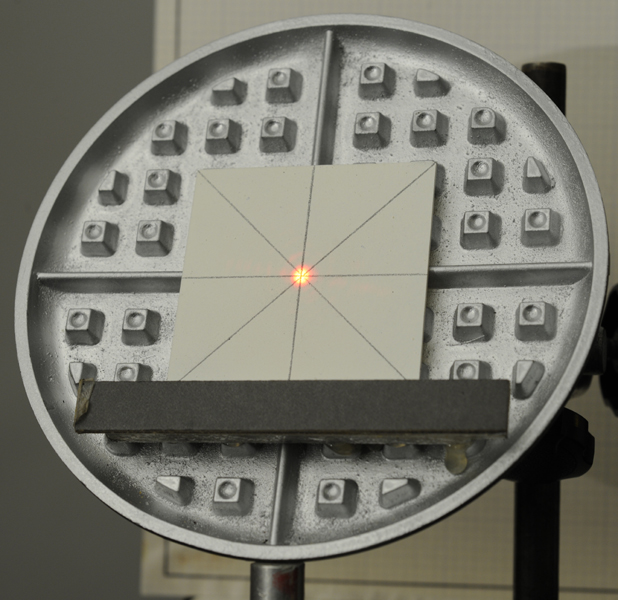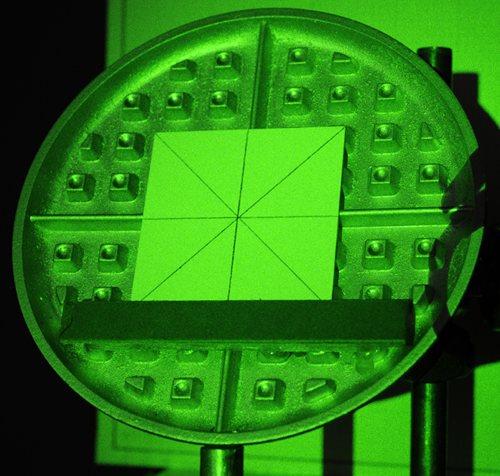

In photography, the light from the source arrives at a scene, whose reflectance the intensity of the light reflected from the scene is further controlled by the aperture of the lens. In holography, the laser’s light bathes the object and that light arrives at the holographic plate without a lens in the way. The intensity of the light bathing the object is determined by how wide the laser beam is spread, which determines the exposure time.
The raw laser beam is centered on the target card, which could be a dud holographic plate painted white with cross hair fiducial marks on it, or a similarly sized piece of cardboard.

Here the beam is diverged only slightly, not even totally filling up the image space, which would result in a hologram whose brightness would vary from the center outward, or even a color variation radially with some processing schemes.

The beam is spread big enough to more than cover the Standardized Test Object, just in case the testing finds a very kick ass bright exposure and development times combination and the spirit moves one to holograph the whole thing!

For consistent results the intensity should be measured, ideally with a calibrated light meter, and recorded in the Log Book. For those not so fortunate, consistent results could also be achieved by using a selenium, CdS, or silicon cell attached to a VOM to measure intensity. If this same radiant flux is acheived again, exposure time should be the same, leaving the processing schedule at the status quo. If half the light is detected, then the exposure time needs to be doubled; if twice the light is detected, then the time needs to be halved, and so forth.